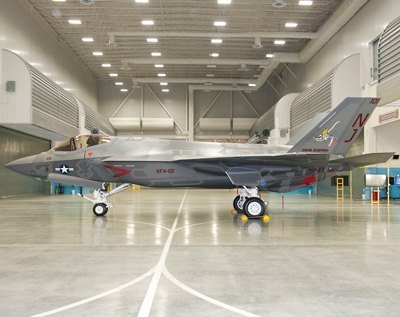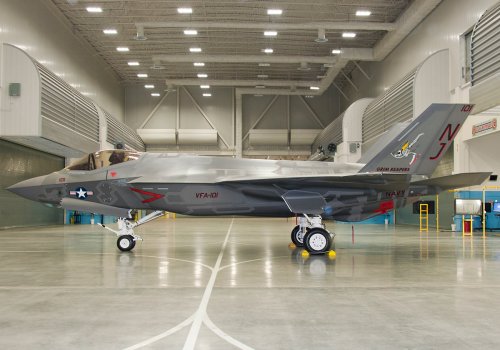“The DOT&E report offers 10 recommendations. The F-35 Joint Program Office has already taken action on six of the 10 recommendations,” says the JSF program office, noting all of the issues highlighted in the report were known. “Of the remaining recommendations, three involve vulnerability concerns and are being reviewed.”
While the program continues to evaluate fixes for problems already identified, and to test multiple blocks of mission-system software concurrently, it is pushing ahead into new areas of testing. “From a flight-test perspective, there are two priorities this year: complete weapons verification and high alpha [angle of attack],” says Tom Burbage, Lockheed Martin F-35 program integration executive vice president and general manager.
“We are using 18 aircraft to conduct the equivalent of three development flight-test programs and one mission-system program,” says J.D. McFarlan, F-35 test and verification vice president. “We expect it to eventually include 8,000 flights and 60,000 test points. So far we've collected 22,000 of those, so we are around 36% through the test program.”
Across the three variants, there are 12 aircraft in the flight-sciences test fleet. Another four are assigned to mission-systems testing, with two more—Stovl production aircraft BF-17 and -18—about to join and complete the flight-test stable based at Edwards AFB, Calif., and NAS Patuxent River, Md. Together they had logged 4,243 flight hours by Jan. 7, with the Stovl aircraft logging 1,309 of those hours and conducting 381 vertical landings.
Tests to clear the F-35A “clean wing” flight envelope for the Block 2B initial combat capability—to Mach 1.6/700 kt airspeed, 9g maneuvers and 40,000-ft. altitude (see F-35 Capability Plan table)—are wrapping up. The next step will be to clear the envelope with internal weapons-bay doors open, he says. Release of the Block 2B envelope is planned for mid-2015. Expanding the flight envelope to 50,000 ft. for the Block 3F full combat capability is planned for 2016, when development testing is scheduled to finish.
The flight-sciences sortie rate is ahead of plan for the F-35B and C, but behind for the A, says the DOT&E. There are high-speed/high-altitude restrictions on all three variants caused by the tail scorching. New surface coatings have been flown unsuccessfully, so a new skin design will be tested on CTOL aircraft AF-2 early this year, according to the report.
High angle-of-attack testing is underway at Edwards AFB using aircraft AF-4 equipped with a spin-recovery parachute. Where the F-16 is limited to 26 deg. alpha by its fly-by-wire flight-control system, the F-35's limiter is set at 50 deg. and the aircraft has been flown to 73 deg. to ensure there is sufficient pitch authority. “We have to really slow down to get those pitch conditions—100 kt at 40,000 ft.,” says McFarlan. “Pilots are pleased with the ability to get the nose down from high angle of attack.”
The control system is designed to prevent departure from controlled flight at high alpha. In tests now beginning, the prevention feature is turned off, the aircraft forced to depart and the system turned back on to ensure it recovers the aircraft. The ultimate goal is to demonstrate safe recovery from a flat spin, with the chute as a backup. After completing these tests, they will be repeated with the spin chute removed. High-alpha testing on the F-35B will begin this year.


